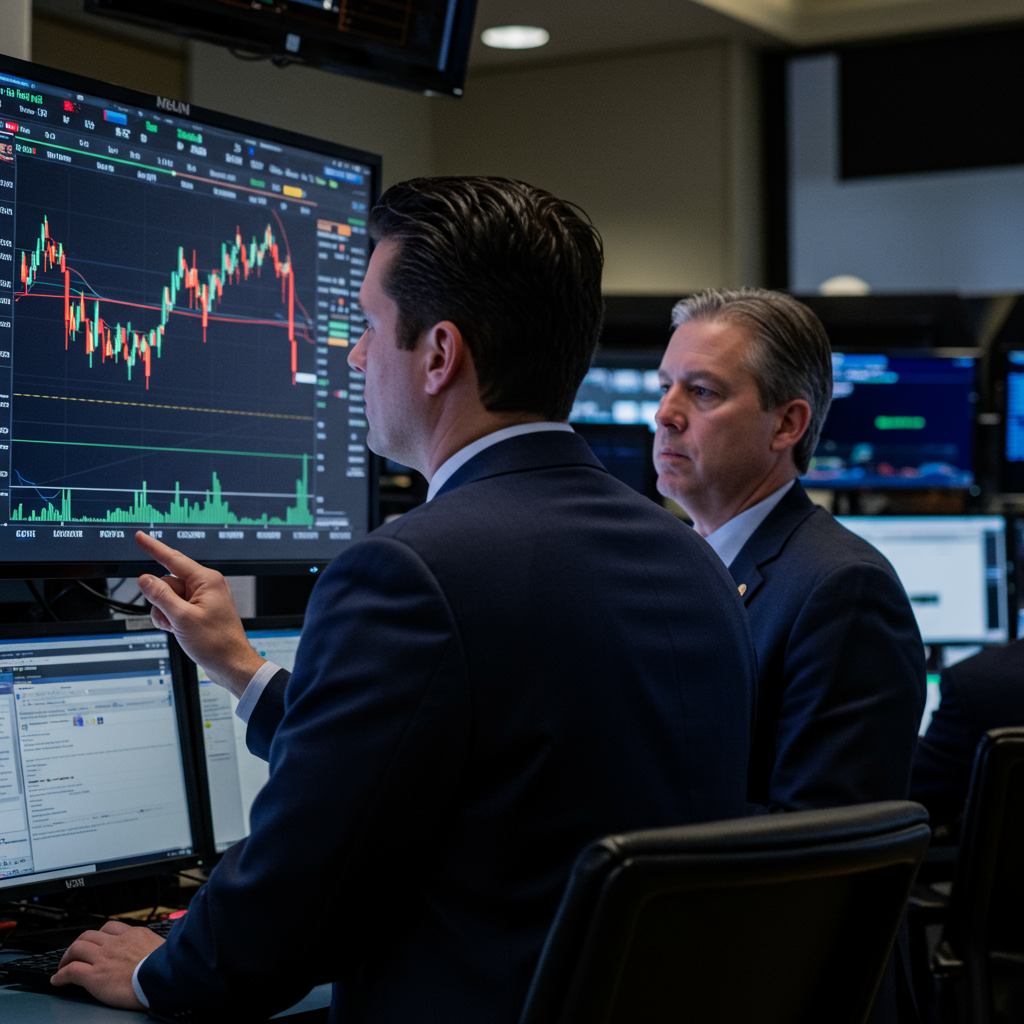Wall Street reacted sharply to Target’s recent leadership announcement. The retail giant’s stock plunged 7% after the company named a long-time insider as its next chief executive. Investors had hoped for a fresh perspective from an external retail expert. This decision fueled concerns that significant changes, deemed essential for the struggling chain, might not materialize. Many analysts believe this signals a continuation of the current strategy, rather than a much-needed overhaul.
Target, known for its “cheap chic” appeal, has faced mounting challenges. Its shares have traded at multi-year lows for months. The unexpected CEO pick further intensified investor skepticism. This critical period demands bold action, yet the choice of an internal candidate suggests a more incremental approach.
A Familiar Face at the Helm: Michael Fiddelke’s Promotion
Target revealed that Michael Fiddelke, the 49-year-old Chief Operating Officer, will assume the CEO role on February 1. He succeeds Brian Cornell, 66, who transitions to an executive chairman position on the board. Cornell, who led Target for a decade, expressed full confidence in Fiddelke. He stated, “There is no one better suited to move Target forward than Michael Fiddelke.”
Fiddelke brings 20 years of Target experience to the top job. He previously served as the company’s chief financial officer. His appointment marks a significant moment for the retailer, but it also highlights a perceived lack of radical change. Investors had openly expressed a desire for a “retail guru” from outside the organization. They believed an external leader could inject new ideas and energy into the flailing chain.
Wall Street’s Verdict: Why the Disappointment?
The immediate 7% drop in Target’s stock price clearly indicated investor dissatisfaction. This reaction reflects a deep-seated desire for strategic shifts. Many on Wall Street view Fiddelke’s internal promotion as a missed opportunity. Gerald Storch, former vice chairman of Target and ex-CEO of Toys R Us, voiced this sentiment. He told The Post, “The stock price reflects that there won’t be change when change is needed.” Storch emphasized Target’s declining sales and ongoing market share erosion.
Investors often prefer an external CEO during periods of underperformance. An outsider can evaluate operations without internal biases. They might be more willing to make difficult, necessary decisions. Christine Leahy, Target’s top independent director, affirmed that the board conducted a thorough search, including external candidates. However, Storch countered this, suggesting many qualified outsiders would have eagerly pursued the role.
Navigating a Retail Minefield: Target’s Recent Struggles
Michael Fiddelke steps into the CEO position at a challenging time. Target has reported dismal financial results in recent quarters. It continues to lose ground to big-box rival Walmart. The new chief executive must immediately confront a persistent slump in sales. This decline is compounded by several significant headwinds.
Consumer backlash over a controversial Pride collection and the reported end of certain DEI (Diversity, Equity, and Inclusion) programs have notably impacted shopper sentiment. These issues led to public criticism and affected sales. Additionally, rampant shoplifting is cited as a major problem. It allegedly doomed Target’s partnership with Ulta Beauty. This deal aimed to open mini beauty shops within nearly a third of Target’s stores. Target announced the cancellation of this arrangement last week, a blow to its in-store offerings.
Michael Fiddelke’s Strategic Blueprint for Turnaround
Despite the immediate market reaction, Michael Fiddelke has outlined his strategic priorities. In a recent press release, he detailed three core areas of focus:
Increasing Target’s offerings of stylish items: This aims to re-establish Target’s “cheap chic” identity. The company recognizes it has lost some fashion and design leadership, particularly in categories like home goods.
Creating a more consistent customer experience: This addresses potential inconsistencies in service, online interaction, and in-store navigation. A seamless experience is crucial for customer retention in today’s competitive retail landscape.
- Using technology to boost efficiency: Implementing advanced technological solutions can streamline operations, optimize supply chains, and enhance the overall shopping journey, both in physical stores and online.
Fiddelke’s experience leading Target’s Enterprise Acceleration Office, formed in May to speed turnaround efforts, gives him unique insights. He acknowledged that the business is underperforming in key areas. For instance, he noted the decline in home goods sales. The company’s focus shifted too much to “core” items, neglecting the fashionable elements important for that category. Target has seen some progress by adding Disney and Marvel-themed bedding to its Pillowfort kids’ decor line, an example Fiddelke cited as a promising direction.
Analyzing Target’s Recent Financial Landscape
The CEO announcement coincided with Target’s second-quarter earnings report. While the company surprisingly beat Wall Street estimates for earnings, the underlying sales and traffic figures remained concerning. Sales and store and website traffic declined once again. Same-store sales, which include online sales and sales from stores open at least 13 months, fell 1.9% compared to the prior year.
Customer transactions dropped 1.3%. Furthermore, the average amount customers spent during those transactions slipped 0.6% year-over-year. These metrics paint a picture of continued customer hesitation and reduced spending at Target. Fiddelke, on a post-earnings call, did note some improvement in retail sales trends from the previous quarter, despite still being negative. He also observed sales trends improving across all six of Target’s key merchandise categories. David Silverman, senior director of Fitch Ratings, pointed to “the company’s recent execution missteps,” exacerbated by a volatile retail industry.
Reclaiming “Cheap Chic” and Market Position
Target’s identity as a “cheap chic” destination is integral to its brand. Reclaiming this position is critical for future success. The company needs to effectively balance affordability with fashionable and desirable merchandise. The shift away from “fashion and design leadership” in segments like home goods illustrates a strategic misstep that needs urgent correction. Fiddelke’s emphasis on stylish items directly targets this issue.
The market share battle with Walmart is another ongoing challenge. Walmart’s robust general merchandise offerings and competitive pricing continue to draw customers. Target must differentiate itself beyond just price. Offering unique, well-designed, and affordable products is key. A more consistent customer experience, enhanced by technology, could also help lure shoppers back. These improvements are vital for reversing the current sales slump and rebuilding investor confidence. The path ahead requires not just tweaks, but a clear, compelling vision that resonates with consumers and convinces skeptical investors.
Frequently Asked Questions
Why did Target’s stock drop following the new CEO announcement?
Target’s stock plunged 7% immediately after it named Michael Fiddelke, a long-time insider, as its new CEO. Investors had hoped for an external “retail guru” to lead the struggling company. This internal appointment disappointed Wall Street, fueling concerns that the necessary radical changes for Target’s sales slump and market share loss might not occur. The drop reflected a lack of confidence that “change is needed when change is needed,” as one former Target executive put it.
What are the key challenges facing Target’s new CEO, Michael Fiddelke?
Michael Fiddelke inherits a host of challenges. He must tackle a persistent slump in sales and reverse market share losses to rival Walmart. The company also faces ongoing consumer backlash related to controversial collections and the alleged end of DEI programs. Furthermore, rampant shoplifting reportedly impacted Target’s partnership with Ulta. Fiddelke’s immediate priorities include increasing stylish offerings, creating a consistent customer experience, and leveraging technology for efficiency.
What is the outlook for Target’s performance under new leadership?
The outlook for Target under Michael Fiddelke is mixed, reflecting a cautious investor sentiment. While Fiddelke’s strategy focuses on enhancing merchandise, customer experience, and technology, analysts remain skeptical whether an insider can deliver the radical transformation Wall Street craves. Target recently beat Q2 earnings estimates but saw declines in sales and traffic. The success will depend on Fiddelke’s ability to effectively address consumer sentiment issues, reverse sales declines, and reclaim Target’s distinct “cheap chic” market position amidst a volatile retail industry.
Conclusion
Target stands at a pivotal juncture. The appointment of Michael Fiddelke as its new CEO, while met with immediate investor skepticism, marks a new chapter for the retail giant. His long tenure within the company offers deep institutional knowledge, yet the market’s reaction clearly indicates a desire for more profound strategic shifts. Fiddelke’s focus on product styling, customer experience, and technological efficiency points to a strategy of incremental improvements rather than a dramatic overhaul.
The coming quarters will be critical as Target navigates persistent sales declines, intense competition, and a complex consumer landscape. Rebuilding investor confidence and reigniting consumer enthusiasm will require more than just operational adjustments; it demands a clear, compelling vision for Target’s future. The effectiveness of Fiddelke’s leadership in transforming these challenges into opportunities will ultimately determine Target’s trajectory in the highly competitive retail sector.
Word Count Check: 1047 words



